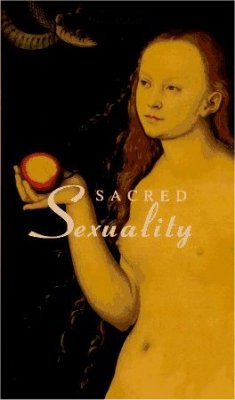|
Hinduism Tantra Paganism
|

|
Sacred
Sexuality
|
Tantra Kama
Sutra
Ancient Sacred
Sexuality Other Texts
The
dominant world religions treat sexuality as (at best) a distraction
from the spiritual path. On the other hand, some spiritual traditions
integrate sexuality into their spiritual practice. Some regard
sexuality as an integral part of life, a gift to be honored and
enjoyed. This section contains classic texts which discuss the sacred
nature of sexuality and affirm the postive aspects of sex. Some of
these texts (the Tantric) are
esoteric and touch on the intersection of the spiritual and the
physical. Others (such as the Kama Sutra material) are more rooted in
the physical world.
Tantra
Tantra now has its own category.
Kama Sutra
In
addition to Tantra, which attributes a spritual dimension to sexuality,
India has produced a rich
literature of sophisticated sex manuals. In spite of their practical
nature, they demonstrate how Indian culture integrated sexuality into
everyday life, (including religion and spirituality). This knowledge
was supposed to be part of the repetoire of any intelligent and
well-educated adult. Several of these were translated in the Victorian
Era by freethinking Orientalists.
Kama Sutra of Vatsayayana
This is the
earliest and best known of the Indian sex manuals. It has been
variously dated from 300 B.C. to 400 A.D. This translation was
published by the Kama Shastra Society in 1883.
The Ananga
Ranga This book was written by the Indian poet
Kalyan Mall much later than the Kama Sutra, in the sixteenth century
A.D. This translation was published by the Kama Shastra Society in
1885.
About
these translations
These
translations (as well as the Perfumed
Garden
and the Priapeia) were produced by Sir Richard Burton and Forster
Fitzgerald Arbuthnot and published by the Kama Shastra Society (founded
1882).
Sir
Richard Burton [1821-1890] (not to be confused with the screen actor)
was a orientalist and daring explorer. Fluent in Arabic and Islamic
culture, Burton
was the first Westerner to enter Mecca
(in disguise). He is also known for his unexpurgated translation of the
Arabian Nights.
F.F. Arbuthnot did most of the
actual work of the translations of the Indian works, while working for
the Indian Civil Service in Bombay
from 1868 to 1879. He was able to consult original texts of the Kama
Sutra and Ananga Ranga and discuss their contents with Indian scholars.
The
texts were printed 'for private circulation only' -- a disclaimer
required in the stifling atmosphere of Victorian England.
In
the late 18th century, classical scholars began to take note of a
phenomena which they termed 'Priapus worship'. This was a complex of
religious ideas in antiquity including phallic votive objects,
fertility ceremonies, sacred prostitution, female and hermaphroditic
creator deities, and other heterodox aspects of ancient religion. Much
of this information had been surpressed or ignored.
The Royal Museum at Naples, Being Some Account of
The Erotic Paintings, Bronzes, and Statues Contained in that Famous
"Cabinet Secret", by Stanislas Marie César Famin [1871]
Sixty lithographs of erotic Roman art and
artifacts.
A Discourse on the Worship of
Priapus/Worship of the Generative Powers
A Discourse on the Worship of Priapus
By Richard Payne Knight [1786]
One of the first studies of 'Phallic
worship'.
The Worship of the Generative Powers
By Thomas Wright [1866]
This study is interesting because it
attempts to connect the dots between the 'Witch cult' and phallic
worship.
The Masculine Cross and Ancient Sex
Worship by Sha Rocco (pseud. Abisha S. Hudson) [1874]
Influence of the Phallic Idea in the
Religions of Antiquity By C. Staniland Wake [1870]
Phallic Worship By Hodder M. Westropp
[1870]
The Priapeia
(Latin and English) Translated by L.C.
Smithers, notes by Sir Richard Burton [1890] This is an anonymous
collection of bawdy epigrams to the phallic garden-god Priapus. This
edition is notable for an extensive tour de force appendix by Sir Burton, which
discusses in explicit detail the sexual practices of the classical
Pagans, including a vocabulary of dozens of Latin terms for male and
female genitalia and short essays about classical references to anal
and oral sex, bestiality, exotic dancers, masturbation, sex positions,
and the lascivious behavior of the Gods and Goddesses. These appendices
were so shocking that Burton disavowed any
connection with the book, in spite of obvious internal evidence that he
is the co-author.
The
Perfumed Garden
This work was
written in the 16th century A.D. by the Shaykh Umar ibn Muhammed
al-Nefzawi. The translation is by Burton. This translation was
published by the Kama Shastra Society in 1886.
The Song of Songs
One of the
most celebrated love poems of all time, the Song of Songs, usually
attributed to King Solomon, is probably a traditional Lebanese wedding
song.
The Poems of Sappho
The famous
poetess whose romantic and erotic love poetry transcended gender in the
worship of the Goddess Aphrodite.
The Love Books of Ovid
Ovid discusses
the fine points of the Art of Love.
The Satyricon of Petronius
A satirical
trip through the underbelly of Neros' Rome, with many details of
the classical pagan religious treatment of sexuality.
Red Thread Zen
addresses the
Buddhist perspective on sexuality.
The Kojiki and Nihongi. These traditional
Japanese creation myths have several episodes which have been cited as
indicating a relaxed attitude about the role of sexuality in life.
|
